Last updated on May 22nd, 2024 at 14:16
Black coffee, some will argue, is the best way to enjoy coffee, as milk, they claim, will spoil the purity of the flavor. Still, the majority of coffee drinkers put milk in their coffee. This article is for those that want to know how to drink black coffee and actually enjoy the taste.
In this article we will detail tips and techniques that you can try to enjoy drinking your coffee black. With nothing else on the agenda, keep reading as we dig down and detail this topic.
Starting with…
What Is Black Coffee?
Table Of Contents
- 1 What Is Black Coffee?
- 2 How Is Coffee Made?
- 3 How To Drink And Enjoy Black Coffee
- 3.1 Gradually And Slowly Reduce The Amount Of Milk Or Cream In Your Coffee
- 3.2 Find What Type of Coffee Beans You Prefer
- 3.3 Experiment With Various Grind Sizes
- 3.4 Try Different Roast Profiles
- 3.5 Experiment With Different Coffee Brewing Methods
- 3.6 Reduce Your Sugar Gradually
- 3.7 Replace Sugar With Natural Alternatives
- 3.8 Get Salty!
- 3.9 Use Fresh Coffee And Keep Your Coffee Fresh
- 3.10 Keep Your Coffee Maker Clean
- 4 Try the Best-Tasting Black Coffee
- 5 Benefits Of Drinking Black Coffee
- 6 Frequently Asked Questions About How To Drink Black Coffee
- 6.1 Is It Good To Drink Straight Black Coffee?
- 6.2 Does Black Coffee Burn Fat?
- 6.3 How To Drink Black Coffee For Fat Loss?
- 6.4 Is Black Coffee Hard On An Empty Stomach?
- 6.5 Does Black Coffee Stain Teeth?
- 6.6 Is Black Coffee Or Water Better In The Morning?
- 6.7 How Do You Protect Your Teeth From Black Coffee?
- 6.8 Why Is Black Coffee So Good?
- 7 Frappé-Ing It All Up – How To Drink Black Coffee
Black coffee is a drink made hot or cold that is made by brewing roasted coffee beans of either the Arabica, Robusta, Liberica Or Excelsa variety.
The brewing methods vary from drip, pour over, French press, Siphon, Aeropress, Moka pot, Espresso and many others. The water, hot or cold, releases the color, flavor, nutrients and caffeine content.
A black coffee can be served cold, hot or over ice.

Read: How to drink coffee
How Is Coffee Made?
In this section we’ll talk about how coffee is made in terms of how it is processed, not brewed, to avoid any confusion.
- Wet Processing, Washed Processing: The fruit from the coffee tree is removed from the beans prior to fermentation. The resulting coffee has a cleaner taste and is more consistent. Wastewater management is a side effect of washed processing. Colombian coffee is almost always washed.
- Natural Processing, Dry Processing: The oldest method of processing. The coffee cherries are left in the sun for fermentation. Once fermented, the pulp is removed. The coffee beans absorb the sugars from the fruit and thus natural processed coffee is sweeter. You need to be careful when naturally processing as the cherries can rot under the sun if care is not taken.
- Honey Processing: This is basically a mix of the above two methods. The coffee cherry is only partially removed prior to fermentation and then drying. The result is a coffee that is clean tasting and sweet.
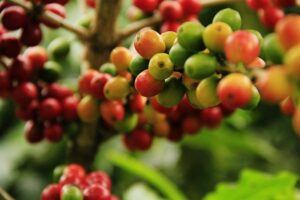
How To Drink And Enjoy Black Coffee
Coffee is a very complex drink. It is more complex than wine. Like wine, you have the complexities of the flavors associated to a specific region and country due to the various microclimates, soil quality and nutrients in the soil.
Unlike wine, there are a wide range of ways of brewing and making coffee, all of which influence how the drink will taste.
Regardless of coffee snobs and the snobbery that they may come up with, drinking black coffee does get you the purest of coffee flavors without the influence of any other elements such as milk, be it dairy or non-dairy milk.
Let’s now discuss how to drink black coffee.
Gradually And Slowly Reduce The Amount Of Milk Or Cream In Your Coffee
The best and easiest way to get used to drinking black coffee and perhaps become a black coffee drinker is to ease your way into it. If you enjoy your coffee with cream or with milk, slowly reduce the amount on a weekly basis.
Measure how much milk or cream you use in your daily coffee and then use 80% of that in the first week. In the second week, reduce to 60%; by week 3 you are using less than half as much milk or cream with only 40% and by week 4 you will be down to 20% and by week 5 ready to try amazing coffee with no milk.
When you do this, you will eventually get to the point where you are accustomed to the flavor of coffee with nothing else added.
Find What Type of Coffee Beans You Prefer
Try many different coffees and find out which black coffee taste you prefer. You need to try a few different coffees from different locations.
First find out which bean you prefer. There are two main coffee species, Arabica and Robusta, which, between them, account for 90% of all coffee sold. The remaining 10% are difficult to find and source and are split between Excelsa (3%) and Liberica (7%).
- Robusta: This coffee type is the second most commonly used, accounting for around 20% of all coffee sold. It is significantly higher in caffeine, between 2.2x to 2.7x as much. They are often used in a blend of Arabica beans to boost the caffeine content. Robust thrives in hot dry climates and produces a coffee that is lower in acidity, a fuller body and smoother texture.
- Arabica: The most popular and common by a long way, with around 70% of sales globally being attributed to this type of bean. You can expect a bright taste with a balanced acidity and a slightly sweet taste.
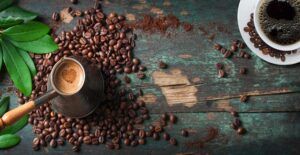
Experiment With Various Grind Sizes
Experimenting with different grind sizes changes how your coffee tastes, regardless of how you take your coffee, be it with or without milk.
With a larger or smaller grind size your coffee will extract more or less flavor from them depending on your extraction time. This will not only help your black coffee taste good, it will help your regular coffee with milk taste better.
- Fine: When you grind to a finer grind size, the coffee particles are smaller and tighter packed. The smaller grind size increases the surface area in which the coffee is in contact with. The result of which is that flavors are extracted quicker, at an increased rate, resulting in a stronger coffee. Smaller grind sizes require shorter brew times. Too fine a grind size will taste bitter.
- Coarse: When you grind to coarser grind size, the coffee particles are bigger and results in a smaller contact area for the water to be in contact with. The smaller contact area requires a longer extraction time to brew your coffee. Too coarse a grind size tastes sour.

Try Different Roast Profiles
Which roast profile your coffee beans are has a dramatic effect on how your coffee will taste. Roasting is an essential part of the coffee process.
All coffee beans start off as the same, as green coffee beans. The roasting process changes them to the tasty brown coffee beans that you are familiar with. Often of different shades of brown right up to a very dark black.
The darker the roast, the more oil comes out to the surface of the beans. Notably, you cannot drink or brew anything from the green beans, as it will produce a grassy flavor.
Darker roasts produce a deeper, more traditional flavor, while lighter roasts produce a more floral flavor and with more tastes from the origin.
- Light Roast: Light roasted coffee beans are cinnamon in color and are roasted at the lowest temperature. The flavor is light, mild and has very little oil, if any, on the surface of the beans. This roast profile is best for single origin and specialty coffee beans.
- Medium Roast: Medium roasted coffee beans are a light to medium brown color and have a sweeter taste than light roasts. They will have a little, minimal oil on their surface and have a balanced acidity, aroma and flavor. Medium roast is the preferred roast that Americans enjoy.
- Medium Dark Roast: This roast profile is darker than the above medium roast profile and is of a darker brown color. You will notice more oil on the surface of the beans than in the above two roast profiles. The flavor is notably deeper and darker. It has minimal acidity.
- Dark: Dark roasted beans are shiny and the oil content on the surface of the beans is notable. They produce a bitter tasting coffee and very little acidity. Expect very little, if any, taste from the original location.
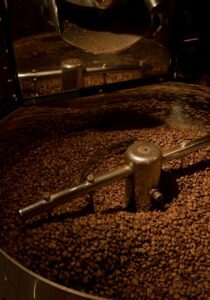
Experiment With Different Coffee Brewing Methods
Different brewing methods will produce very different results and, of course, a very different tasting coffee that also has a different texture – depending on the brewing method.
How to drink black coffee and get used to the taste. You might need to experiment with different ways of brewing your coffee. What your black coffee tastes like as a drip is different as a French press coffee.
Play around, have fun and find which coffee brewing method tastes best for you.
- Pour-Over Coffee: Pour-over coffee is a very meditative experience and similar to drip coffee. Pour over coffee can be considered as manual drip coffee. You have full control over the water temperature, brewing time, and speed in which the water is poured. It is a great brewing method that is good for casual coffee drinkers and those looking to improve their coffee skills. No expensive equipment is needed.
- Drip: Drip coffee is great and most kitchens have one. All you need is your machine, coffee grounds and the actual drip coffee maker. The machine does the work for you. Your coffee taste will change based on what filter you are using. A metal filter will produce bolder coffee; a paper filter will produce a clean, crisp taste. A cotton filter will produce a taste that is in between the two.
- French Press: Full disclosure – this is my preferred brewing method for single origin and specialty coffee beans. This brewing method gives you full control of all the variables connected to brewing a cup of coffee.
- Cold Brew: A brewing method that requires very few, if any, equipment. Use water as cold as you possibly can, almost freezing, to draw out the low flavor compounds. Store the brew in your fridge while you are brewing. You will get a very delicious, smooth tasting coffee.
- Espresso: This brewing method uses very fine powder like coffee beans. Packed and compressed, tamped. The pressure and freshness of the coffee beans produces the thick rich creama. Brew time is quick 25 to 30 seconds. Freshest coffee is best.
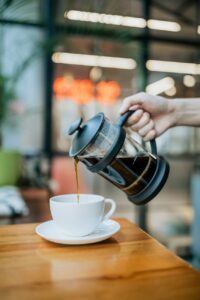
Reduce Your Sugar Gradually
This is totally optional. Drinking coffee sugar-free is not something I’d have ever imagined that I would be drinking coffee sugar-free.
To be honest, I’d have never realized just how much sugar influences the flavor of coffee. If you are a legitimate coffee lover, I suggest coffee without sugar.
Take it at your own pace, reduce it slightly every week by 20% until you are not using any sugar.
Replace Sugar With Natural Alternatives
This is what I did!
Seriously, the effect of using alternatives to regular sugar and even using different types of sugar really changes how your coffee will taste. Even little changes from white sugar to brown sugar or to coconut sugar.
You have limited options, including:
- 1. Brown Sugar.
- 2. Coconut Sugar.
- 3. Stevia.
- 4. Honey: Various from regular honey to eucalyptus to orange honey and Rosemary honey. Try them all!
- 5. Agave.
- 6. Cinnamon.
- 7. Cacao powder.
- 8. Vanilla extract.
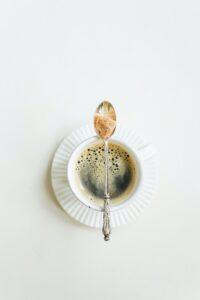
Get Salty!
As crazy as this sounds – a dash of salt in your coffee really changes how it will taste. The Vietnamese use salt to reduce the bitterness and bitter taste of coffee.
Use Fresh Coffee And Keep Your Coffee Fresh
One of the greatest things you can do for yourself and your coffee is to buy fresh coffee beans and store them properly.
You will get a bolder coffee flavor and an overall better coffee experience by storing them perfectly. Use a proper and professional coffee can that is designed for that purpose.
Make sure it has a one-way valve and an airtight lid. Keep your beans in the coffee can and store them in your freezer. Your beans won’t freeze; you will be keeping them in optimum conditions for maximum freshness.
Keep Your Coffee Maker Clean
Coffee is a food product and treat it as such. You most certainly would not make your dinner with dirty cookware, so why brew coffee with a dirty machine.
Clean your coffee machine on a regular basis and run a decalcification cycle at least every other week.
Old coffee can get stuck in your machine and the pipes and get moldy and rotten.
Try the Best-Tasting Black Coffee
The best tasting black coffee is very subjective. For me, it is Indonesian Sumatra Volcanic coffee, which is amazing as a latte and as a straight black coffee.
Try different beans from different parts of the world and use the one(s) that you enjoy the most. Don’t forget to use different brewing methods.
Benefits Of Drinking Black Coffee
There are many benefits of drinking black coffee, however the research on the topic is limited.
- Promotes Weight Loss: Coffee on its own will help you to lose weight. A balanced diet and exercise will further help. The thermogenesis effect of caffeine can aid your body in burning fat. Furthermore, the appetite suppressing effect of coffee will help you with your diet.
- Improves Energy Levels: The average 75 to 200 mg of caffeine per cup of coffee has a stimulating effect on boosting energy levels. There is also an effect of improved focus and increased dopamine levels.
- Fights Depression: While mental health is a complex issue, it is not going to be solved with a cup of coffee. Studies do exist showing it can help to prevent depression and increase dopamine levels.
- Provides Essential Nutrients: Coffee contains potassium, niacin, magnesium and manganese. A regular cup of coffee will provide you with these nutrients.
- May Reduce The Risk Of Some Diseases: Despite no 100% definitive proof, there are multiple studies that indicate that regular coffee drinkers are 23% to 50% less likely to develop Parkinson’s disease, Alzheimer’s diseases and Type II diabetes.
These benefits are for drinkers of all coffee and not just black coffee.
Black Coffee Benefits
- Is Dairy Free: No milk, no dairy product. A big plus for those that are lactose intolerant. This though is not exclusive to black coffee as non-dairy milk alternatives can be used.
- Has Less Calories: Straight black coffee with no sugar has fewer calories by as much as 42 calories per cup.
- Enhances The Flavor Of Your Coffee: You get the original taste of the coffee without the influential flavor of milk or sugar or anything else you may add to it. It is the raw taste of coffee as it should be.
Frequently Asked Questions About How To Drink Black Coffee
Is It Good To Drink Straight Black Coffee?
Yes, there are many health benefits to drinking black coffee, including reduced calorie count, less sugar and less fat. Black coffee has many known health benefits including a reduced risk of type 2 diabetes, alzheimers disease, cancer and cirrhosis of the liver.
Does Black Coffee Burn Fat?
Research by Harvard University indicates that drinking up to four cups of coffee per day can result in a 4% reduction in body fat.
How To Drink Black Coffee For Fat Loss?
If you want to drink black coffee for fat loss, drink it after meals. The chlorogenic acid, which is only found in coffee, delays the production of glucose and the formation of fat cells and thus fewer calories are stored in your body.
Is Black Coffee Hard On An Empty Stomach?
While black coffee does increase the production of stomach acids, thankfully it does not cause digestive issues. for the majority of people, and thus it is not hard on an empty stomach for most people.
However,
if you suffer from GERD you might fall into the category of people who are best not to drink black coffee on an empty stomach.
Does Black Coffee Stain Teeth?
Yes, black coffee stains teeth. Coffee has a substance called tannins, a polyphenol which, despite being a micronutrient, causes color compounds to stick to your teeth.
Is Black Coffee Or Water Better In The Morning?
Drinking water is much better for you in the morning than coffee. Even though you may need a caffeine kick, having gone 6 to 8 hours without consuming any liquid drinking water is better.
Drinking water before your coffee will clean your mouth and make your coffee taste better.
How Do You Protect Your Teeth From Black Coffee?
The best way to protect your teeth from black coffee is to brush and floss your teeth after drinking a cup of coffee.
Why Is Black Coffee So Good?
Black coffee is so good due to being able to taste the unique notes and flavors of single origin coffee without the influence of milk or sugar.
Frappé-Ing It All Up – How To Drink Black Coffee
How to drink black coffee and get used to the taste of it is something that you can condition yourself to by gradually reducing your milk content by 20% per week until you are ready to go milk free.
You can take the same steps with sugar also, and before you know it you will be enjoying a well-made, black coffee with nothing at all added to it and enjoying the taste.
Join our cool coffee community and share your coffee recipes, latte art, brewing tips and anything and everything coffee related. Find us on Facebook/Meta.







